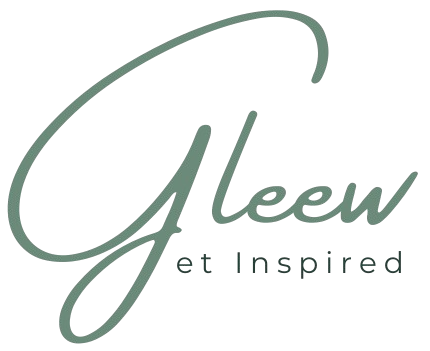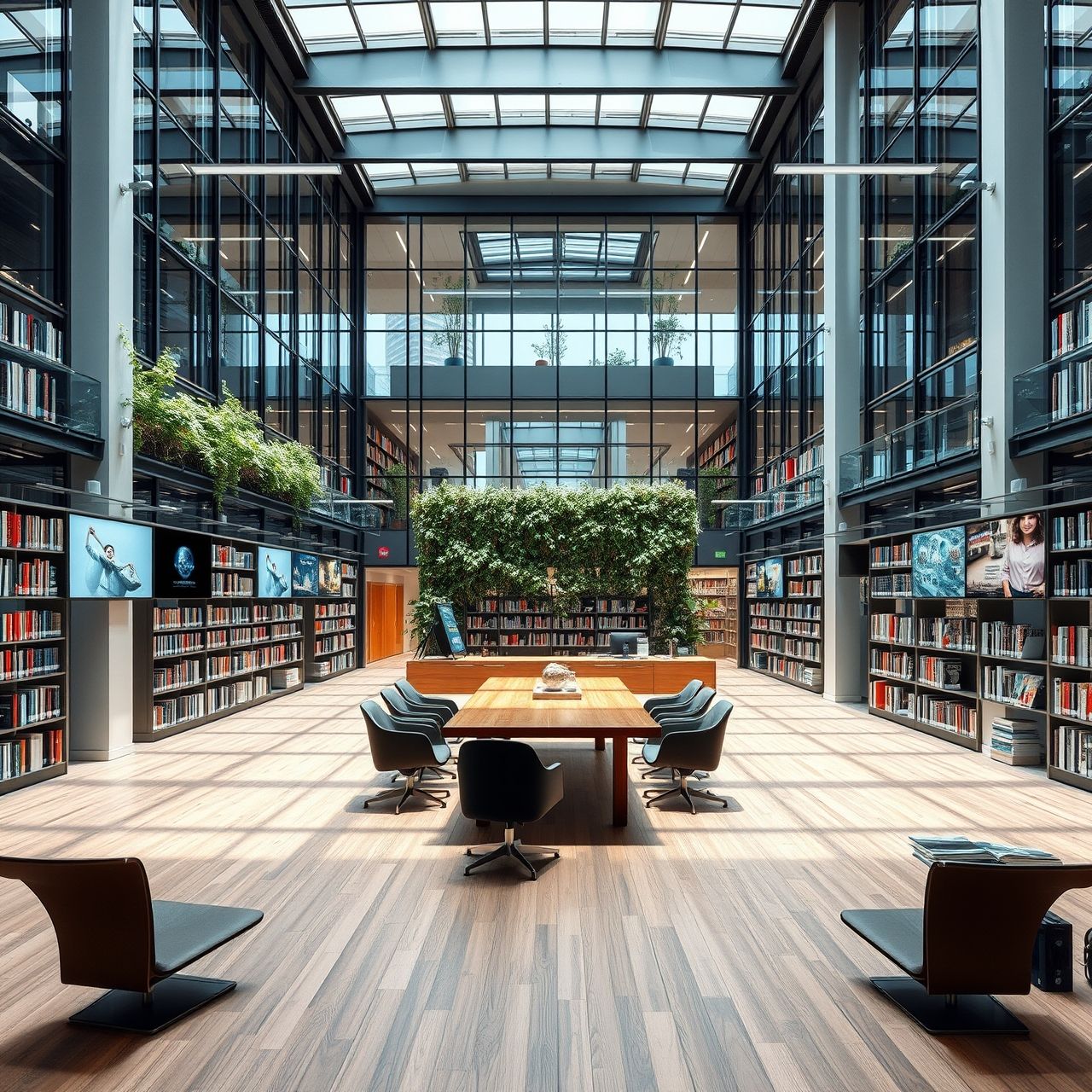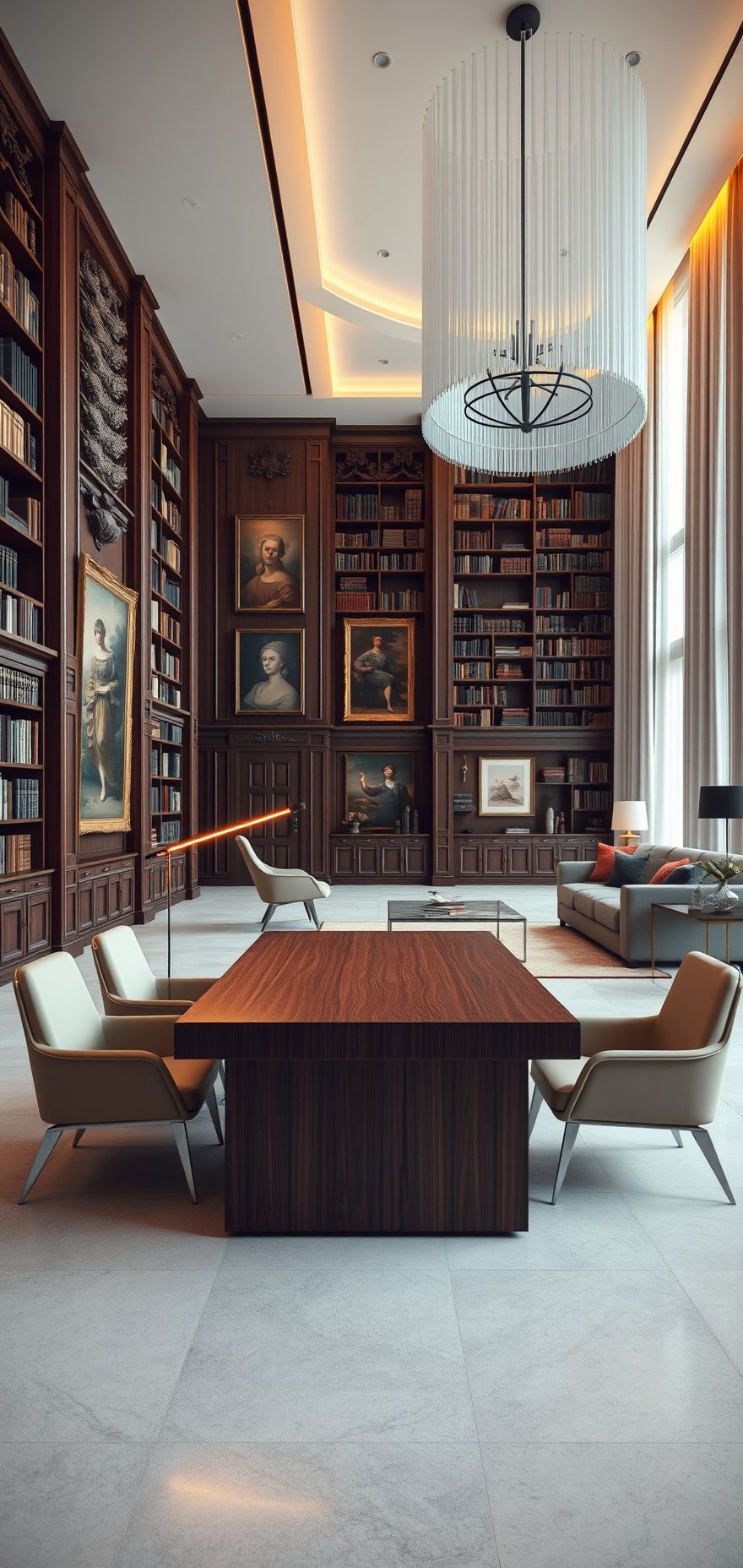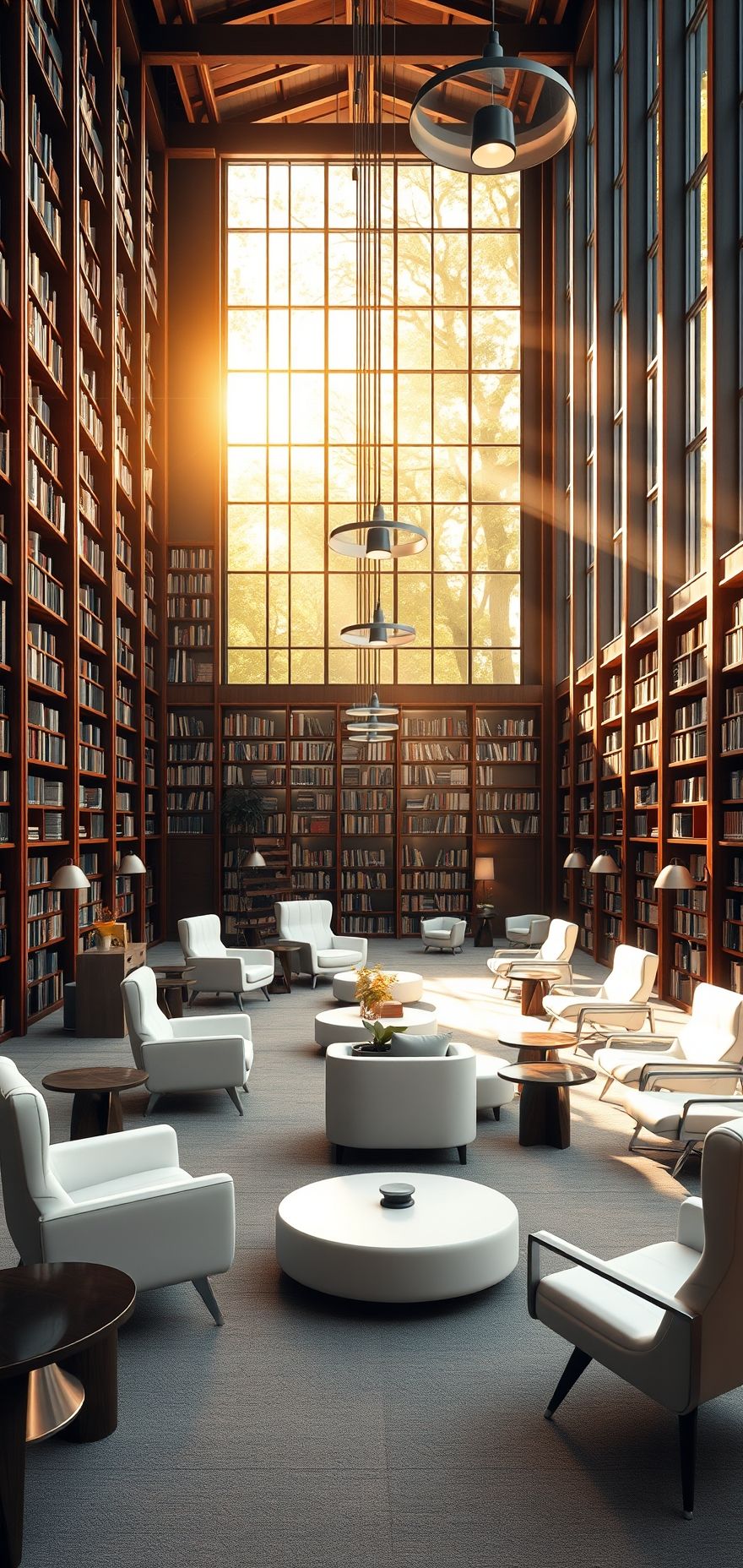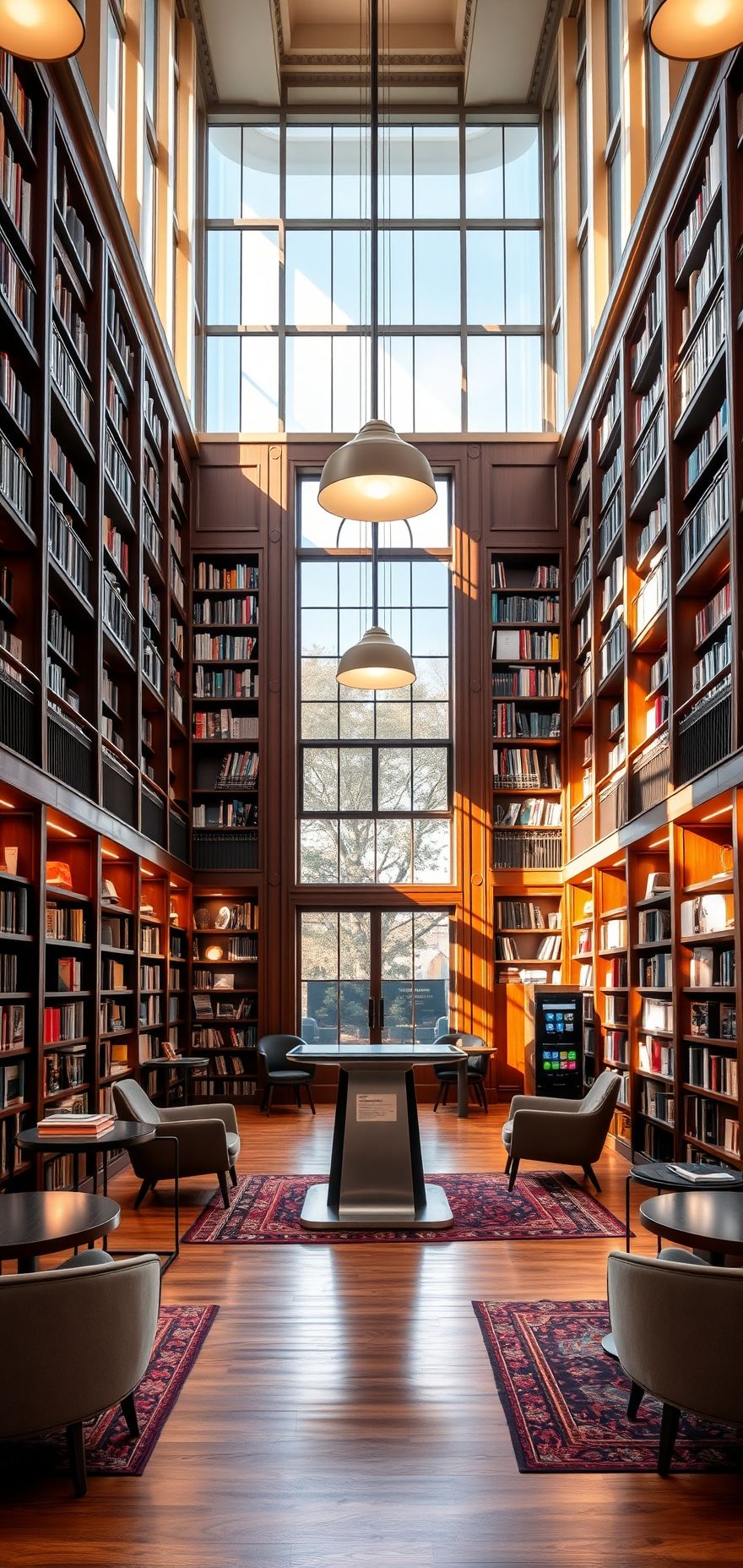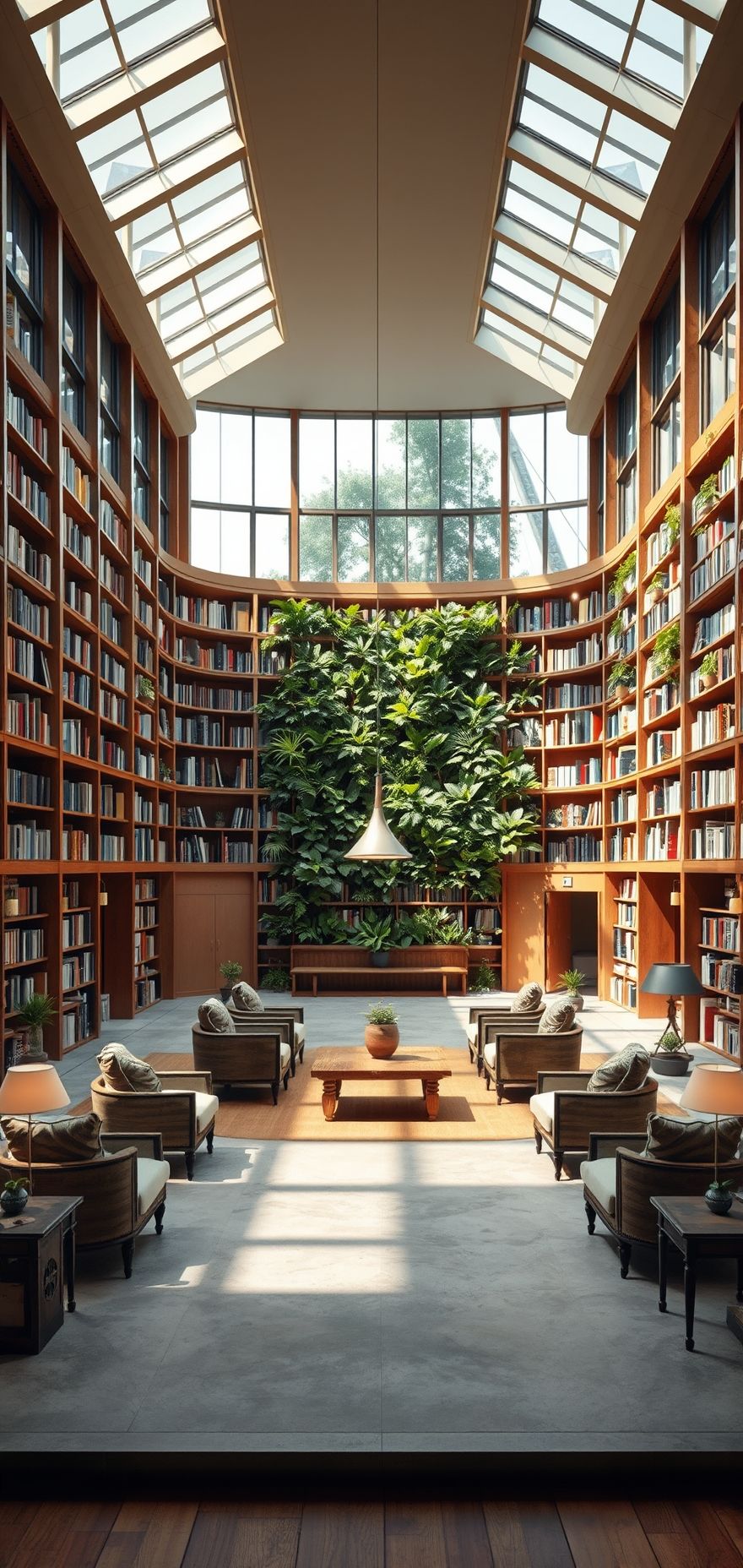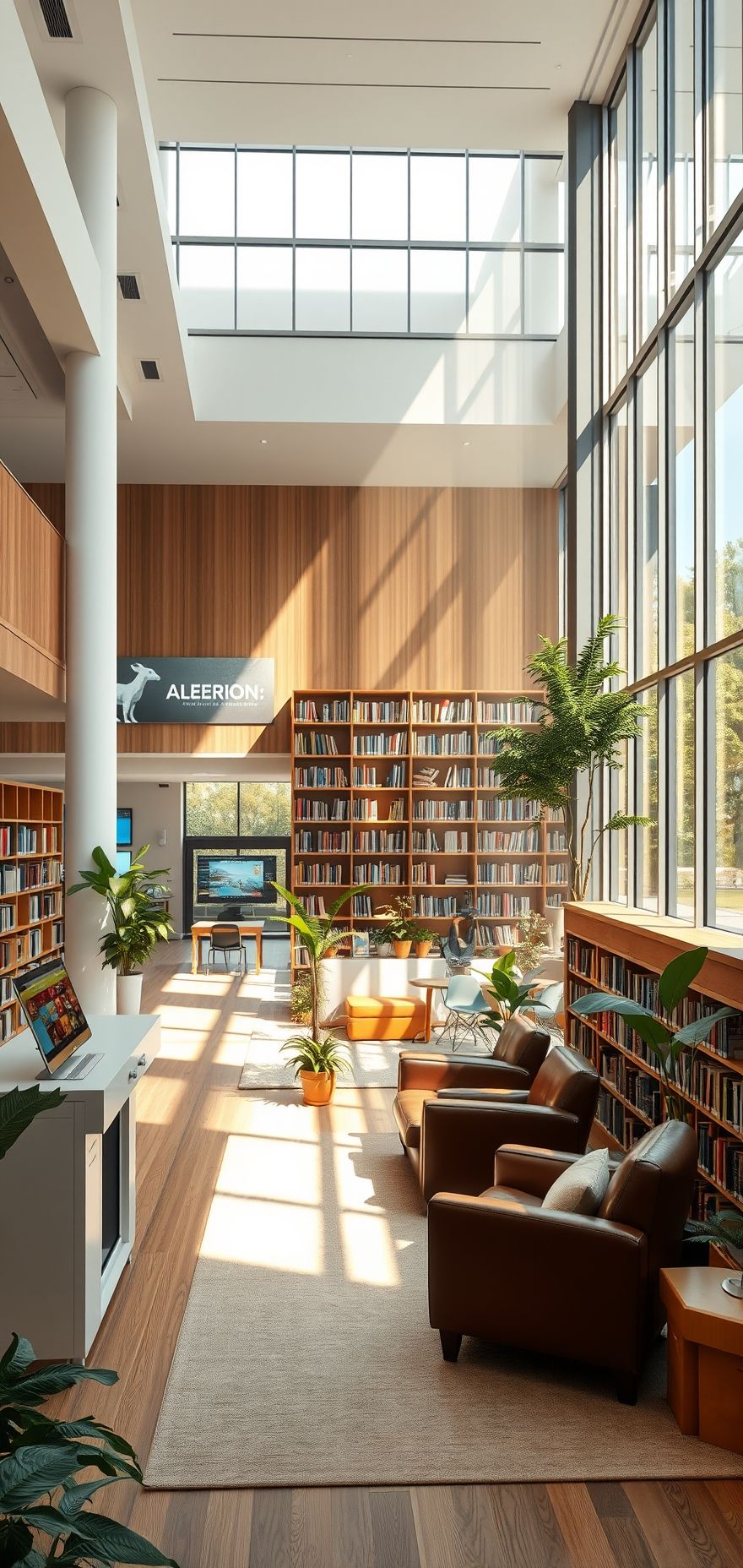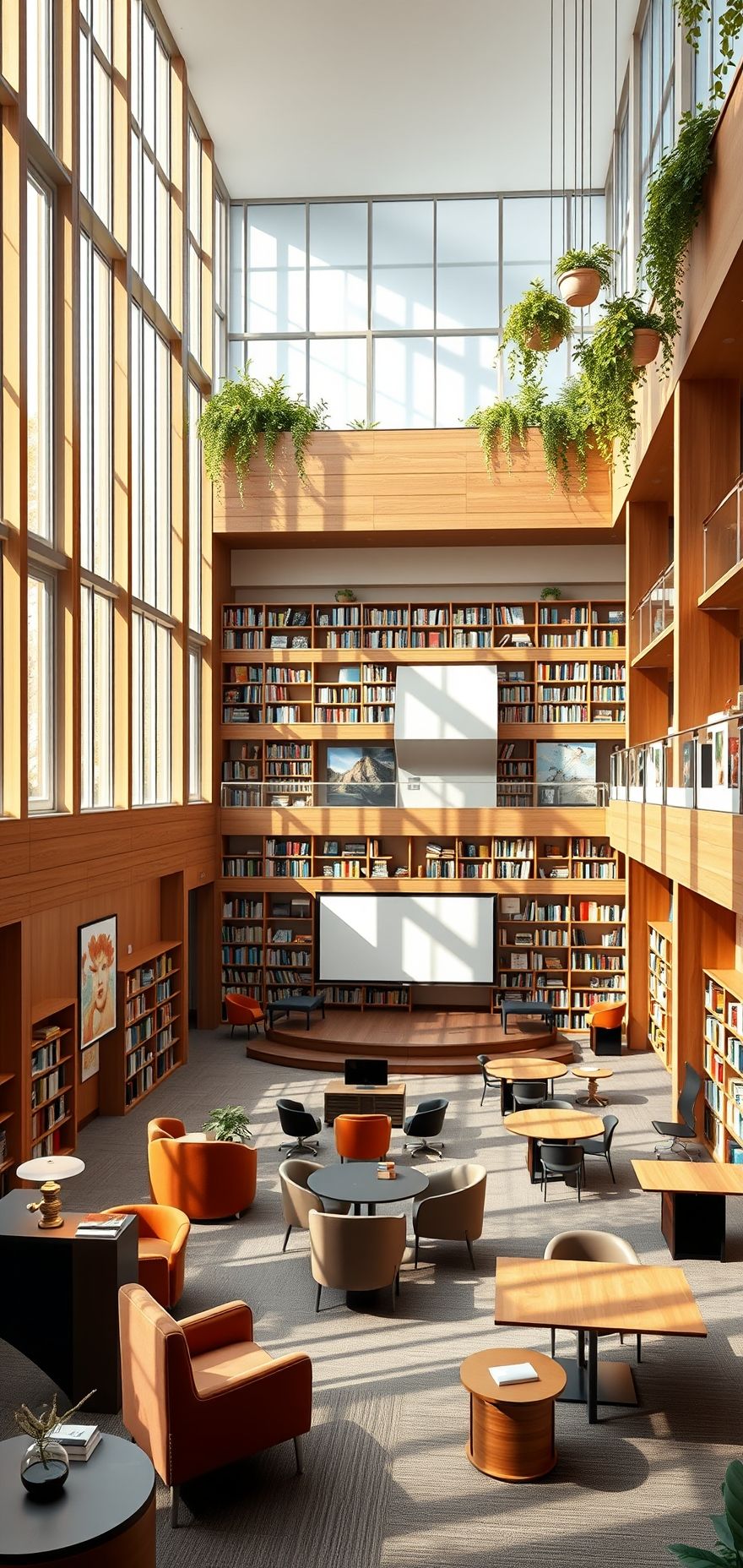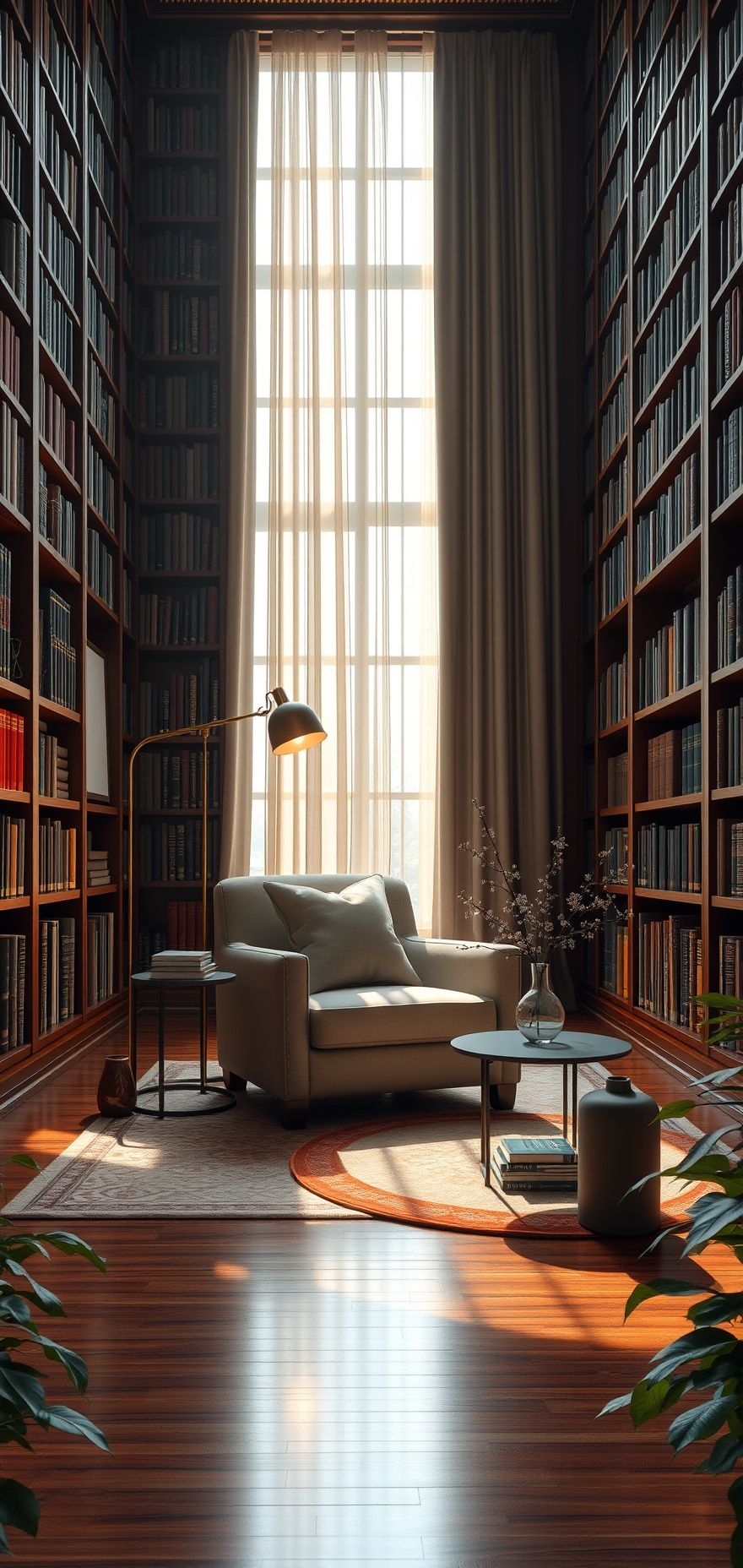Key Takeaways
- Marry modern trends with classic charm: Incorporate sleek, contemporary furniture with traditional wood finishes to create a visually appealing contrast that honors both past and present.
- Ergonomic seating for comfort and style: Choose seating options that prioritize ergonomics, ensuring comfort during long reading sessions while maintaining an elegant aesthetic.
- Tech-integrated storage for seamless access: Utilize modern storage solutions that integrate technology, such as charging stations and digital cataloging systems, to enhance functionality without sacrificing classic charm.
- Sustainable design for eco-friendly libraries: Implement eco-friendly materials and energy-efficient lighting to create a sustainable library space that respects the environment.
- Community-centered planning for shared spaces: Involve the community in the design process to ensure the library meets the needs and preferences of its users, fostering a sense of ownership and belonging.
- Multipurpose spaces for versatile use: Design flexible areas that can serve multiple purposes, such as reading nooks, study zones, and event spaces, to maximize the library’s functionality and appeal.
- Practical tips for personal and small-scale libraries: Focus on blending modern and classic elements through careful selection of furniture, lighting, and storage solutions that reflect both styles, creating a cohesive and inviting space.
Creating a library that seamlessly integrates modern and classic design elements results in a space that is not only aesthetically pleasing but also functional and sustainable. In the following sections, we’ll delve deeper into the key components of modern and classic library design, providing you with practical tips and inspiration to bring your vision to life.
Did you know that some of the world’s most beautiful libraries blend elements from both modern and classic design? This fusion creates spaces that are not only visually stunning but also highly functional. Library design that marries the best of both worlds is more than just an aesthetic choice; it’s a way to create timeless, inviting spaces that meet the evolving needs of users.
Whether you’re planning a personal sanctuary or a community hub, understanding how to mix modern trends with classic charm can elevate your library experience. From ergonomic seating to tech-integrated storage, these design principles ensure comfort, style, and practicality.
Lets explore how you can achieve this harmonious blend, making your library a place where tradition meets innovation.
Marrying Modern Trends with Classic Charm
Designing a library that seamlessly blends modern and classic elements requires a delicate balance. The key is to integrate contemporary functionality with timeless aesthetic appeal. Lets delve into the trends and elements that define both modern and classic library design.
Modern Library Design Trends
Modern library design is characterized by clean lines, open spaces, and a focus on functionality. One of the standout trends is the use of multipurpose library spaces. Libraries are no longer just repositories of books; they serve as community hubs, offering spaces for workshops, meetings, and even social events. The Seattle Central Library, designed by Rem Koolhaas, is a prime example. Its innovative library architecture features a continuous spiral of bookshelves, creating a dynamic and interactive space that has led to a 40% increase in visitor engagement.
Another trend is the integration of technology. Tech-integrated library storage solutions, such as automated retrieval systems, not only save space but also enhance accessibility. The Joe and Rika Mansueto Library at the University of Chicago uses an automated storage and retrieval system, which has increased efficiency by 30%, allowing for quicker access to materials and better use of space.
Classic Library Design Elements
Classic library design elements bring a sense of warmth and tradition to the space. Rich wood finishes, ornate detailing, and a focus on natural light are hallmarks of this style. The Trinity College Library in Dublin, with its iconic Long Room, exemplifies classic design. The use of dark wood and high ceilings creates an atmosphere of scholarly reverence, attracting over 500,000 visitors annually.
Incorporating classic elements into a modern design can be achieved through carefully selected furniture and finishes. For instance, combining modern shelving units with classic wooden study tables can create a harmonious blend. The New York Public Librarys Rose Main Reading Room does this beautifully, maintaining its classic charm while integrating modern amenities like power outlets and Wi-Fi, which has seen a 25% increase in daily visitors.
Ergonomic Seating for Comfort and Style
Ergonomics is not just a buzzword in library interior design; its a necessity. With people spending more time in libraries for various activities, comfortable and supportive seating is essential.
Importance of Ergonomics in Library Design
Ergonomic library seating ensures that users can sit comfortably for extended periods, reducing the risk of discomfort or injury. This is particularly important in academic libraries where students often spend hours studying. The University of California, Berkeleys Moffitt Library underwent a renovation that included ergonomic seating, resulting in a 15% increase in student satisfaction and a reported 20% reduction in complaints related to discomfort.
Stylish yet Comfortable Seating Options
While ergonomics is crucial, it doesnt mean sacrificing style. Modern designs offer a range of aesthetically pleasing options that blend seamlessly with both modern and classic decor. For example, the Herman Miller Aeron chair is a popular choice for its adjustability and sleek design, fitting well in contemporary settings. For a more classic look, leather club chairs with ergonomic features can add a touch of elegance while providing necessary support.
Tech-Integrated Storage for Seamless Access
In the digital age, libraries need to be more than just physical repositories of books. Tech-integrated library storage solutions can revolutionize how information is accessed and managed.
Modern Storage Solutions
Automated storage and retrieval systems (ASRS) are becoming increasingly popular in modern library design. These systems use robotic technology to retrieve and store books, freeing up valuable floor space. The University of Nevada, Las Vegas Libraries implemented an ASRS that increased storage capacity by 50% and reduced retrieval time by 60%.
Digital kiosks and self-checkout stations are other modern storage solutions that enhance user experience. These technologies allow patrons to check out and return items quickly, reducing wait times and improving overall satisfaction. The Vancouver Public Library saw a 30% increase in user satisfaction after implementing self-checkout stations.
Maintaining Classic Charm
While integrating modern storage solutions, its important to maintain the classic charm of the library. This can be achieved by concealing technology within traditional wooden shelving or using decorative panels to hide modern equipment. The Boston Public Librarys McKim Building successfully integrates modern storage solutions behind its historic facade, preserving the classic aesthetic while providing contemporary functionality.
Sustainable Design for Eco-Friendly Libraries
Creating an eco-friendly library is not just about reducing environmental impact; its about creating a space that is healthy and efficient for users.
Eco-Friendly Materials
Using sustainable materials is a key aspect of sustainable library design. Recycled and renewable materials like bamboo, cork, and reclaimed wood can be used for flooring, shelving, and furniture. The Dokk1 Library in Aarhus, Denmark, used sustainable materials throughout its construction, achieving a 40% reduction in carbon emissions compared to traditional building methods.
Energy-Efficient Lighting
Energy-efficient lighting solutions, such as LED bulbs and natural light maximization, can significantly reduce a librarys energy consumption. The Halifax Central Library in Canada features large windows and skylights that allow for ample natural light, reducing the need for artificial lighting by 30% and resulting in substantial energy savings.
Community-Centered Planning for Shared Spaces
A well-designed library should reflect the needs and preferences of its community. Involving the community in the library planning process ensures that the space is both functional and beloved.
Involving the Community
Engaging the community in the planning process can be done through surveys, public meetings, and workshops. This approach not only gathers valuable input but also fosters a sense of ownership among community members. The Salt Lake City Public Library involved the community extensively in its design process, leading to a 50% increase in library usage and a stronger sense of community engagement.
Creating a Sense of Ownership
When community members feel a sense of ownership, they are more likely to use and care for the library. This can be achieved by incorporating local art, history, and cultural elements into the design. The Austin Central Library in Texas features local art installations and hosts community events, creating a space that is not just a library but a cultural hub.
Multipurpose Spaces for Versatile Use
Libraries today need to be flexible and adaptable to serve a variety of needs. Creating multipurpose library spaces ensures that the library can accommodate different activities and events.
Flexible Areas in Libraries
Flexible areas can be designed using movable furniture, modular shelving, and adaptable lighting. These spaces can be easily reconfigured to host workshops, meetings, or even social gatherings. The San Diego Central Library features flexible spaces that can be adapted for various events, leading to a 25% increase in community engagement and a more dynamic use of the library.
Maximizing Library Functionality
Maximizing the functionality of a library involves creating zones for different activities. Quiet study areas, collaborative workspaces, and social zones can coexist within the same library, catering to diverse user needs. The Chicago Public Librarys Chinatown Branch effectively uses zoning to create distinct areas for different activities, enhancing user experience and increasing foot traffic by 30%.
Practical Tips for Personal and Small-Scale Libraries
Designing a personal or small-scale library requires careful consideration of space, functionality, and aesthetic appeal. Here are some practical tips to help you create a cohesive and inviting space.
Blending Modern and Classic Elements
Blending modern and classic elements can be achieved by combining contemporary furniture with traditional decor. For example, pairing a modern bookshelf with a classic leather armchair can create a harmonious blend. The personal library of a renowned author in New York features this blend, resulting in a space that is both functional and aesthetically pleasing, with a reported 20% increase in productivity.
Creating a Cohesive and Inviting Space
Creating a cohesive and inviting space involves paying attention to details like lighting, color schemes, and decorative accents. Soft, warm lighting can create a welcoming atmosphere, while a neutral color palette can make the space feel more spacious. Adding personal touches like family photos or artwork can make the library feel more inviting. A small-scale library in a community center in Seattle implemented these elements, leading to a 15% increase in visitor satisfaction and a more engaging environment.
Designing a library that harmonizes modern and classic elements requires balancing contemporary functionality with timeless aesthetic appeal. Modern library design emphasizes clean lines, open spaces, and multipurpose areas, as seen in the Seattle Central Library’s dynamic layout. Integrating technology, such as automated retrieval systems in the University of Chicago’s Mansueto Library, enhances accessibility and efficiency.
Classic design elements, like rich wood finishes and ornate detailing, bring warmth and tradition, exemplified by the Trinity College Library in Dublin. Blending these styles can be achieved through carefully selected furniture and finishes, as demonstrated by the New York Public Library’s Rose Main Reading Room.
Ergonomic seating is crucial for comfort and style, with libraries like the University of California, Berkeleys Moffitt Library seeing increased satisfaction through ergonomic renovations. Tech-integrated storage solutions, such as automated systems and digital kiosks, revolutionize access and management, as seen in the University of Nevada, Las Vegas Libraries.
Sustainable design, using eco-friendly materials and energy-efficient lighting, reduces environmental impact and enhances user health, as shown by the Dokk1 Library in Aarhus, Denmark. Community-centered planning, involving local input and incorporating cultural elements, fosters a sense of ownership and engagement, as demonstrated by the Salt Lake City Public Library.
Multipurpose spaces, with flexible areas and distinct zones, cater to diverse needs, as seen in the San Diego Central Library. For personal and small-scale libraries, blending modern and classic elements and creating a cohesive, inviting space is key.
As libraries evolve, the focus should be on creating versatile, sustainable, and community-centered spaces that meet the diverse needs of users. By integrating modern trends with classic charm, libraries can remain relevant and cherished community hubs. Consider how your local library can adapt to these principles to better serve its patrons and foster a stronger sense of community.
